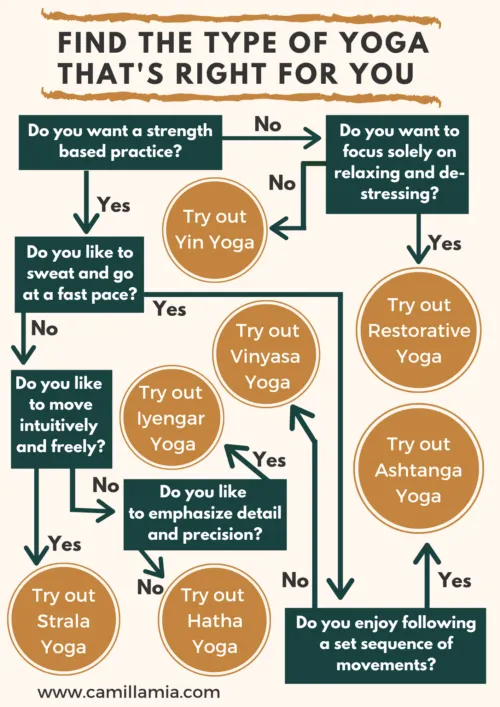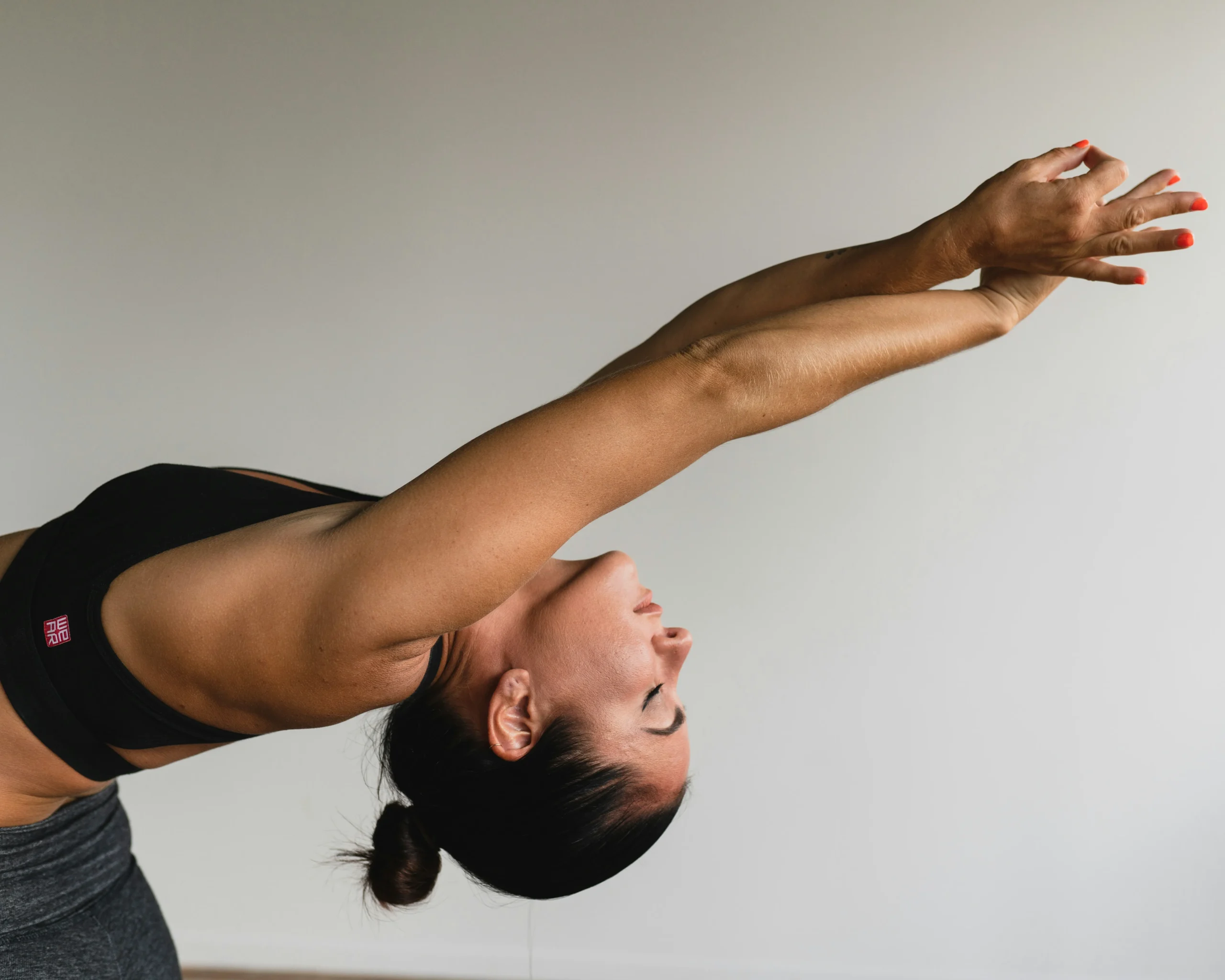Yoga is more than just a popular trend—it’s a journey of self-discovery that dates back thousands of years. Yet, amidst its soaring popularity, the true essence of yoga meaning often gets tangled in a web of myths and misconceptions. Many believe yoga meaning is all about bending into pretzel shapes or chanting in a dim room, but is that all there is to it? In this post, we’re going to unravel the real “yoga meaning” by busting some of the most common myths. Get ready to dive deep into what yoga meaning really is and, just maybe, how it can transform your life beyond the mat.
Table of Contents
Myth 1: Yoga Is Just About Stretching

Think yoga is just about touching your toes or getting a good stretch? Think again. While yoga meaning does involve a range of physical postures that improve flexibility, it’s not just a stretching routine. Yoga is a holistic practice that integrates physical, mental, and spiritual growth. Each posture is designed not only to enhance your physical flexibility but to prepare the body for deeper spiritual experiences.
The Real Meaning Behind the Movements
Yoga postures, known as asanas, are actually just one of the eight limbs of yoga outlined in the ancient texts. Asanas are designed to strengthen the body and make it more supple, yes, but their ultimate purpose is far greater—preparing the practitioner for prolonged meditation and promoting the flow of vital energy. This deeper aim addresses the balance and harmony between the mind, body, and spirit, helping you achieve a state of well-being that goes beyond mere physical health.
Want to learn more about what asana is? Read:
Myth 2: Yoga Is Easy and Not a Real Workout
Underestimating yoga meaning as an easy activity is a common error for the uninitiated. Depending on the style, yoga can be incredibly challenging and physically demanding. For instance, Ashtanga, Power Yoga, and Vinyasa can provide rigorous workouts that rival any high-intensity interval training session.
Yoga’s Physical Benefits Beyond the Surface
Yoga does more than burn calories and tone muscles. It’s a full-body workout that builds strength, enhances cardiovascular conditioning, promotes respiratory and circulatory health, and improves balance and coordination. Moreover, yoga meaning requires mental focus and discipline, which can strengthen psychological resilience. Regular practice not only sculpts your body but also significantly boosts stamina, flexibility, and overall fitness.
Myth 3: You Have to Be Flexible to Do Yoga
One of the biggest deterrents for beginners is the myth that you need to be flexible to even start yoga. Images of yogis twisted into complex poses can be intimidating, but they don’t represent the starting point for most practitioners. Yoga is not about being good at bending; it’s about personal growth and meeting your body where it is.
Everyone Starts Somewhere
Yoga improves flexibility over time, but it doesn’t demand it from the start. The beauty of yoga lies in its adaptability. There are poses for every level of flexibility, and modifications can always be made to accommodate your current physical state. Instructors often emphasize that the journey is about personal progress, not perfection or competition. So, whether you can touch your toes or barely reach your knees, there’s a place for you in yoga.
Myth 4: Yoga Is Only for Women

Though modern Western yoga classes might often be filled with more women than men, yoga is far from a gender-specific practice. The roots of yoga in ancient India were actually predominantly male. Today, yoga is for everyone: men, women, and non-binary people. It benefits all who practice, irrespective of gender.
Breaking Gender Stereotypes in Yoga
High-profile male athletes and celebrities who practice yoga help to break down these gender stereotypes. Yoga offers significant benefits that are universal, like stress reduction, improved mental health, and enhanced physical fitness. More and more men are discovering how yoga can increase strength, reduce recovery time, and improve athletic performance. By highlighting the diversity in the yoga community, we can encourage a more inclusive environment where everyone benefits from what yoga meaning has to offer.
Myth 5: Yoga Is a Religion
It’s a common misconception that yoga meaning is inherently religious, or that practicing it means adopting Hindu or Buddhist beliefs. While yoga meaning does have its roots in ancient India and is deeply spiritual, it is not a religion. Yoga is a philosophy that enhances the connection between mind, body, and spirit, and it can be practiced by individuals of any faith or none at all.
Spiritual but Secular
Yoga meaning encourages inner peace, mindfulness, and a harmonious lifestyle, but it does not require any religious worship. Many people find that yoga supports their own spiritual beliefs by providing time for quiet reflection and meditation. On the other hand, for those who prefer a purely physical practice, yoga meaning does not impose any spiritual beliefs. It’s adaptable and can be tailored to meet the personal comfort levels of everyone, emphasizing wellness over worship.
Myth 6: Yoga Is Too Time-Consuming
Another barrier to starting yoga can be the perception that it requires a big time investment. While some practices are lengthy, yoga can actually be incredibly flexible (no pun intended) in how it fits into your schedule. You don’t need to commit to hour-long sessions each day to gain benefits.
Quick Yoga Routines for the Busy Bee
Yoga can be practiced in short bursts throughout the day—many effective routines are as short as 10 to 15 minutes. For those with hectic schedules, incorporating brief sessions can still provide significant benefits, like reduced stress, improved concentration, and increased energy. Practices such as the “Sun Salutation” can be completed in just a few minutes but offer a quick and comprehensive workout that affects the entire body and mind.
Myth 7: All Yoga Is the Same

A common misunderstanding among those new to yoga is that it’s a monolithic practice, where all styles and sessions offer the same experience. In reality, yoga is incredibly diverse, with numerous styles ranging from the gentle flows of Hatha to the intense heat of Bikram, and the dynamic sequences of Vinyasa. Each style has its own unique focus, pace, and benefits, allowing practitioners to find a type that resonates with their personal fitness goals, energy levels, and lifestyle.
Finding the Right Yoga for You
Exploring different styles of yoga is key to keeping your practice engaging and relevant to your needs. Whether you seek relaxation, a vigorous workout, or a spiritual journey, there’s a yoga style that aligns with your desires. Workshops, trial classes, and online tutorials can be great ways to test out various forms before committing to one, ensuring that your yoga journey is as rewarding and personal as possible.
Conclusion of Yoga Meaning
Yoga is much more than just a physical exercise; it’s a rich, multifaceted practice that offers something for everyone, regardless of age, gender, fitness level, or spiritual inclination. By debunking these seven common myths, we hope to have cleared up some misconceptions and illustrated just how flexible and inclusive yoga can be. Whether you’re looking to improve physical strength, gain mental clarity, or explore spiritual depth, yoga offers a path toward balanced living that respects individual paths and encourages holistic growth.
Are You Ready?
Are you ready to take the first step on your yoga journey, or maybe just dive deeper into your existing practice? We’d love to hear what myths you’ve encountered or how yoga has changed your perspective. Share your stories in the comments below, and join our community of mindful practitioners who celebrate the diverse and transformative power of yoga. Don’t forget to subscribe for more insights and updates on how to live a more balanced and fulfilling life!







